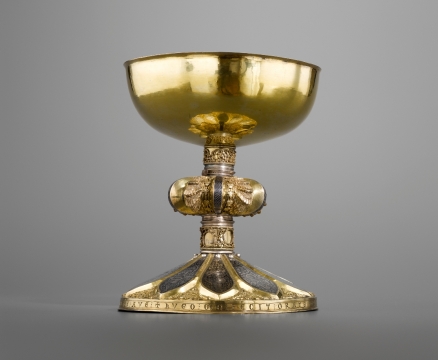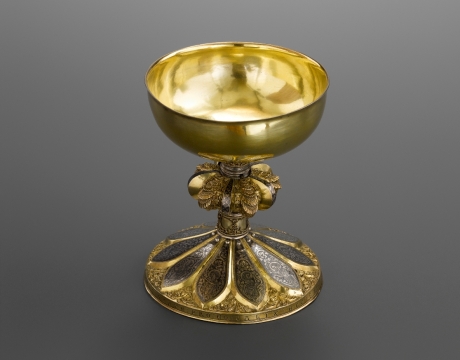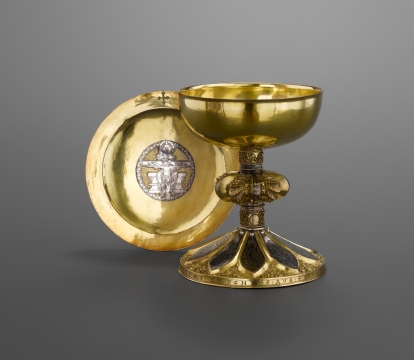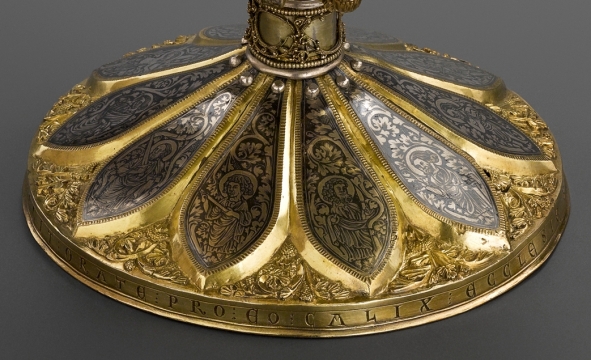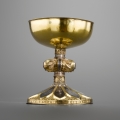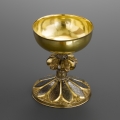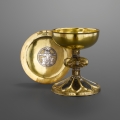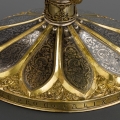Hugo d’Oignies
1228
Type:
Chalice
Material / technique:
Silver gilt and niello
Dimensions:
17.8 x 15.4 cms
Type of acquisition:
Donated by the Sœurs de Notre-Dame de Namur
Year of acquisition:
2010
Depository institution:
Musée Provincial des Arts Anciens du Namurois, Namur
Collection:
